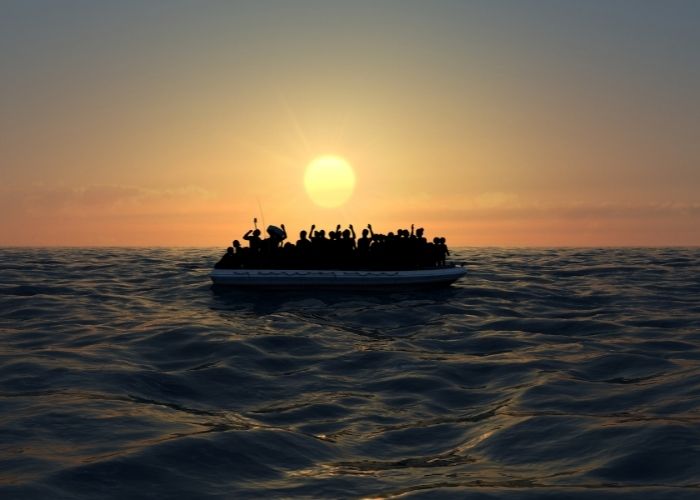LAS PALMAS DE GRAN CANARIA – Last Tuesday evening, another 52 refugees were rescued from a boat floating 12 kilometres south of Gran Canaria in the Canary Islands. This time there were 29 women (including one pregnant), 14 men and nine children on board.
One of the rescued children, all aged between one and thirteen, was resuscitated right on the beach. He is now in a critical condition in hospital after severe hypothermia. Five other children are also in hospital with symptoms of hypothermia. Among the adults, one woman with severe and two men with mild hypothermia are in hospital. The pregnant woman was also hospitalised.
The immigrants themselves indicate that they left from Dakhla, in the south of Morocco. This is some 450 kilometres south of Gran Canaria. They then drifted around at sea for four or five days. Two brothers aged five and thirteen said they were traveling alone. However, their mother had been put in another boat in Dakhla.
Big problem
This is just one of the many poignant stories of immigrants arriving in the Canary Islands. There are approximately 23,000 immigrants currently on the Islands. However, only a few (just under 4,000 in 2020) also apply for asylum. This is not out of unwillingness, but because the procedure sidelined them.
Additionally, no data is available on the nationality of the immigrants. It is assumed that there are many Malians in the Canary Islands. However, it appears that 90% of the asylum applications come from Latin Americans who travelled to the islands by plane. The vast majority of them come from Venezuela, followed by Colombia, then a few other countries. Only 8.6% of the applications come from people from African countries. When added to the fact that only 4% of all asylum applications in Spain are made in the Canary Islands, it is clear how big the immigration problem is for the Spanish government.
Incomplete data
The question is how complete the data that is known in Spain about immigrants is. The official figures only count those who have formally submitted an asylum application to the Spanish Aliens Police. Usually, months – sometimes even more than a year – pass between the moment an immigrant indicates that he wishes to apply for asylum and can actually submit the asylum application to the aliens police. These cases are not included in the official figures. A lot of hard work is being done to shorten this waiting time, but the results are still pending.
Where is the problem?
The problems are piling up, starting with the arrival in one of the Canary Islands. The lawyers who have to inform the immigrants about the legal side of the asylum application procedure cannot cope with the large influx. At Tenerife there was only one interpreter for almost 200 asylum applicants. There has since been some improvement after the Spanish newspaper EL PAÍS and the Spanish radio station Cadena SER paid attention to it in November 2020, but it continues to mop with the tap open. The various lockdowns imposed by corona are also another delaying factor.


